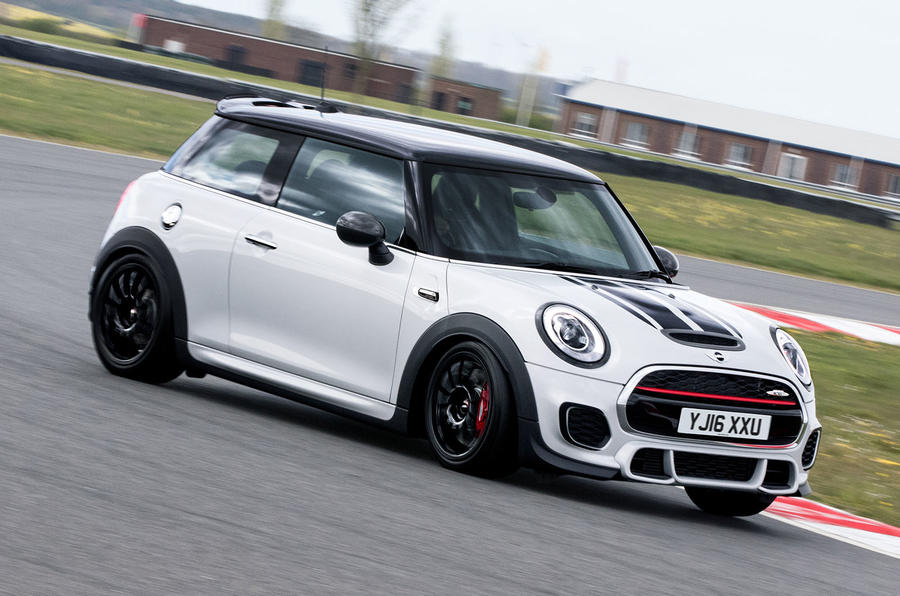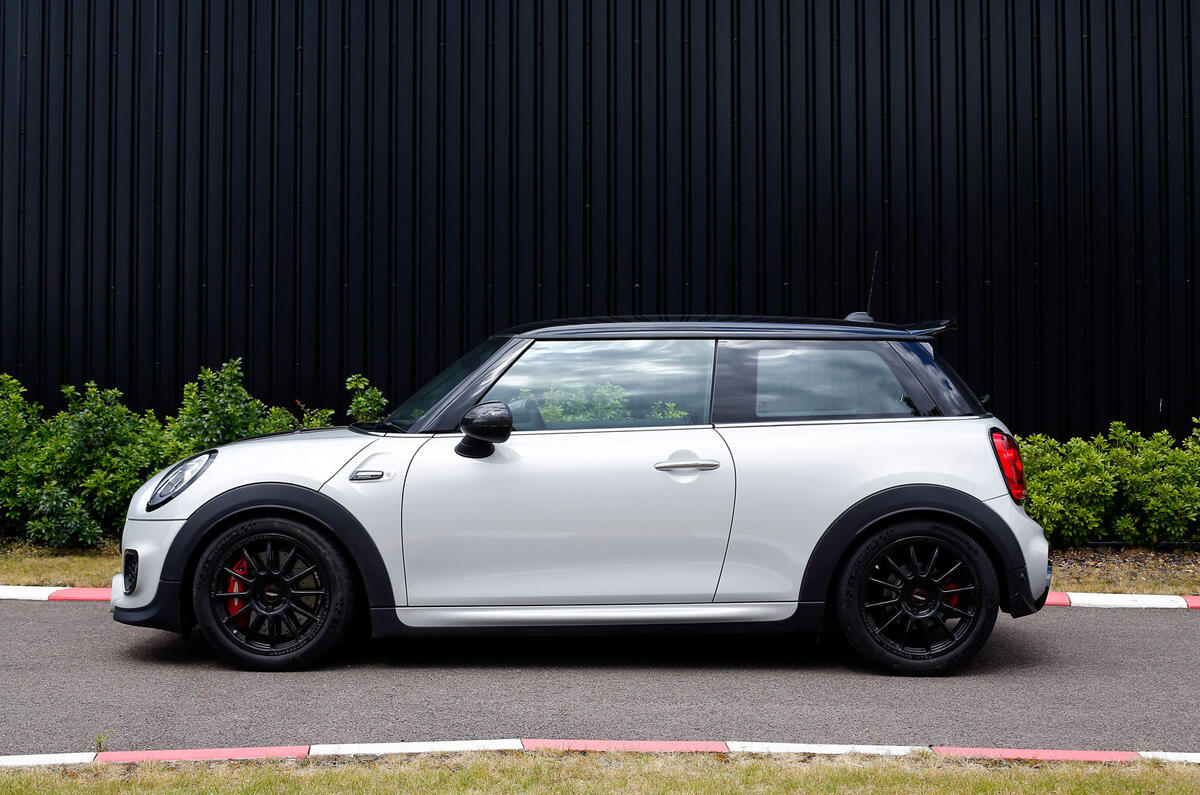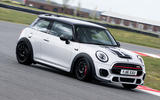What is it?
If you have a liking for beautifully finished, high-precision tuning parts, then the pieces laid out on a table deep within the Mini factory at Oxford might just get you mildly excited. On display is a quartet of four blue coil springs, a pair of these Nitron coilovers, all four of them height-adjustable. Also present – and a surprisingly heavy thing to lift – is the flanged, step-domed shape of a Quaife automatic torque-biasing limited-slip differential.
Absent from the table, for reasons of weight and bulk, is the carbonfibre-tipped JCW Pro sports exhaust whose straight-through valve is operated by remote Bluetooth controller, a set of drilled and grooved disc brakes and four lightweight Team Dynamics 17in gloss black-coated alloy wheels and their Michelin Pilot Sport Cup 2 tyres. Also missing are a pair of camber-adjustable top mounts. All these components belong to the new Mini John Cooper Works Challenge, an ultra-low-production, highly specialized version of the JCW aimed at enthusiasts who want an everyday hot hatch that can also be used for serious track day work.
Partly the brainchild of Mini UK brand boss Nikolaus Griebner, this BMW-era Mini derivative is unusual for having been developed entirely in the UK, in a workshop called Building 71 that also prepares some of the Mini racers several employees campaign in the Challenge series. As you might gather from the tally of components, this is a Mini aimed directly at the (very) keen driver. "I want John Cooper Works to be the first address for enthusiasts of hot hatches," says Griebner, a racer himself and a man who clearly has his sights set on winning away some Renault Sport and hot Ford business.
The basic idea was to build a JCW Mini that’s closer in character to the Mini Challenge race car developed in 2014, which is, according to Griebner, like a small touring car. "So why not link the two?" he says. "I drove both and thought we could do something." That something involved a conversation with Oxford-based Mini development engineers Jim Loukes and Chris Fryer, resulting in the trio hatching a plan to sharpen a Mini JCW hatch with Challenge racer parts, although with the difference being that this car would be usable every day despite its track ambitions.
Which is why the rear seat remains despite the absence of such furniture in the limited-edition Mini JCW GP, the 17in wheels are not the biggest a Mini can wear and the non-run-flat tyres have surprisingly tall sidewalls, these last two selections aimed at delivering an acceptably pliant ride. The spring rates are unchanged for the same reason, with an required extra firmness achieved via the adjustable - and refurbishable - Nitron dampers.
"We wanted an analogue feel, with more directness and closeness of feedback to the driver," says Griebner. "We also wanted a car that works not only on the track but also on the road. A hot hatch has to be usable as well as dynamic." Discussions with Mini Challenge race suppliers ensued, and by December last year the shopping list of parts had arrived, all bespoke and none available off the shelf, including the Nitron R1 dampers, whose firmness can be altered by twisting a small knob.
The front pair couldn’t be easier to adjust once you’ve opened the bonnet, but to alter the rears you must grub about under the Mini’s rear end and remove a protective sleeve before doing your twisting. It’s easy once your fingers know where to go, though. "At track days, you often find that you soon get to the limit," says Griebner. "With this car, it evolves with you to suit your needs."























































Join the debate
Add your comment
A crazy thought?